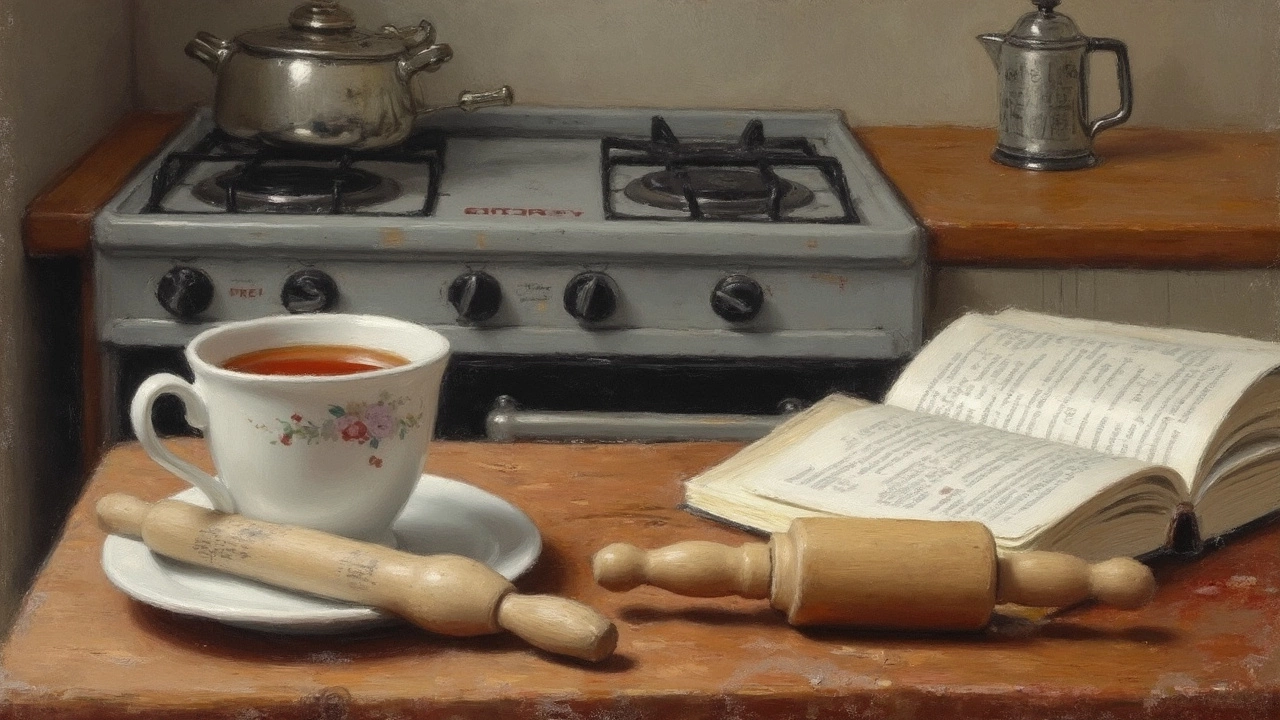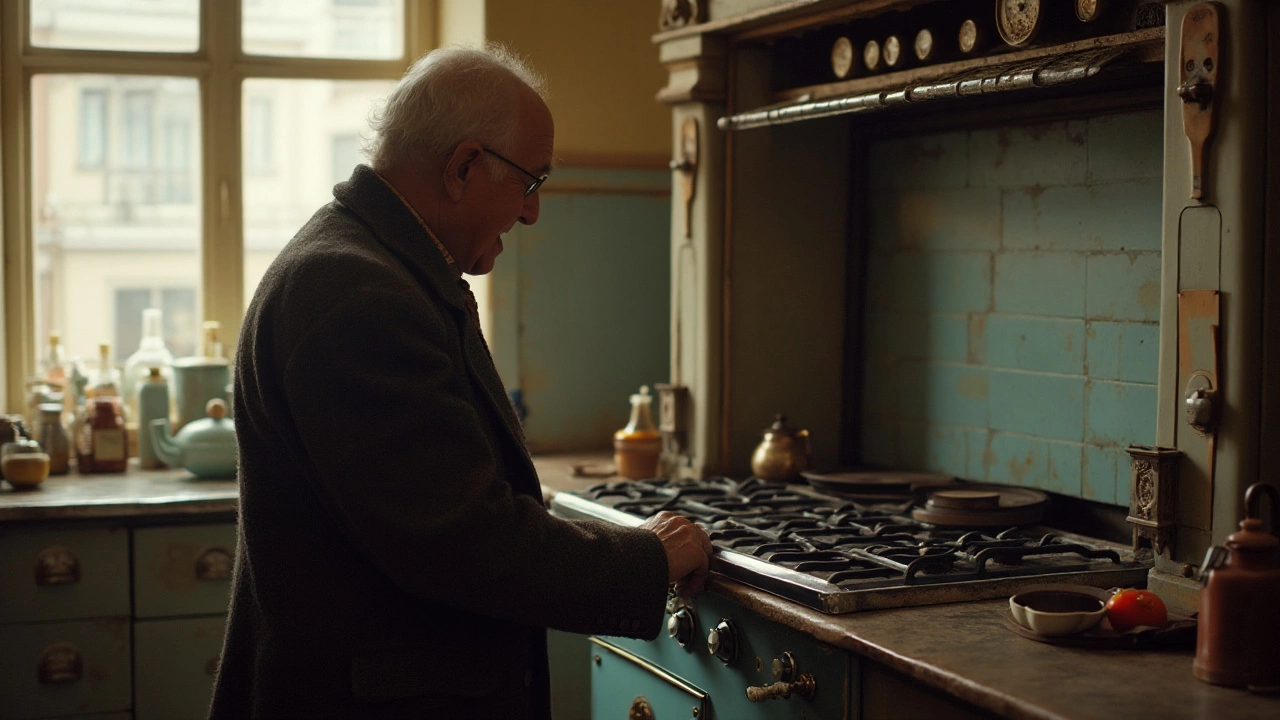
- 13 Mar 2025
- Gideon Thornton
- 0
Ever been halfway through cooking your favorite dish, only to notice the stove isn't heating properly? Annoying, right? Electric stoves, though pretty reliable, do have their quirks. The first headache you might face? Those pesky heating elements causing grief. If one or more of them isn’t glowing as it should, your cooking might turn into a slow-moving disaster.
If you're staring at your stove wondering why it’s not reaching the right temperature or perhaps heating unevenly, this could be your culprit. But don't worry—you might not need a professional just yet. Sometimes it's as simple as a loose connection or a worn-out element. Go on, be brave; checking or replacing a faulty element isn’t rocket science!
- Faulty Heating Elements
- Troubleshooting Heating Problems
- Temperature Control Malfunctions
- Fixing Temperature Issues
- Safety Tips
- When to Call a Professional
Faulty Heating Elements
It’s a bummer when you're ready to whip up something delicious, and your electric stove lets you down. One of the big culprits here is often the heating element. These elements, usually made out of coiled metal and designed to convert electricity into heat, can face a range of issues over time.
So, what goes wrong? Sometimes, the heating element might not heat at all, or it might have uneven heating, meaning some parts of the coil get red hot, while others stay dark. In simple terms, this might spell trouble for your perfectly even pancakes or that crispy roast.
Identifying the Issue
First up, visually inspect the element. Is it clean, or are there burn marks or visible wear and tear? Sometimes the problem is pretty evident once you take a good look.
- If the element is intact but still not working, it's time to check for loose connections. Turn off the power first (no one wants to get zapped) and then try wiggling the element a bit.
- Still no luck? It could be a blown element. A quick test is to swap it with another one from the stove that you know works and see if it heats up.
Replacement and Repair
If you find a bum element, replacing it isn’t all that tough. Here's a quick guide:
- Buy a replacement that matches your model—get into the habit of checking the serial numbers.
- Turn off the power (safety first, always).
- Remove the faulty element by unscrewing it from the connection point.
- Fit in the new element, screw it back into place, and reapply power.
And just like that, you're back in business!
Curious about the longevity of these things? On average, heating elements can last anywhere between 5 to 10 years, depending on use and care. So, keeping an eye on their condition before they hit the proverbial frying pan can save you from kitchen chaos down the road.
Temperature Control Malfunctions
When your electric stove doesn’t heat to the temperature you set it at, it’s a real pain. You might put your cake in the oven, expecting it to come out perfectly baked, only to find a half-done mess. So, what's going on when your beloved appliance starts acting up?
Understanding Temperature Dial Issues
Your stove's temperature control knob plays a crucial role. If it’s not properly calibrated, your temperature settings could be way off. Ever set it to 350°F and it feels more like 300°F? That’s often a calibration problem. And don't worry, your stove isn't trying to ruin your souffle on purpose! Calibrating can usually be sorted out with a good read over the manual and a little patience.
Digging into the Thermostat
The thermostat's job is to regulate the oven's temperature. If it’s damaged or malfunctioning, it won’t send the right signals, and your stove will have a mind of its own. What's next? Time to inspect that trusty component.
- If you suspect thermostat trouble, you can run a simple test. Preheat the oven and place an oven thermometer inside.
- After about 15-30 minutes, check the reading. If it's significantly off, the thermostat may need replacement.
Temperature Sensors: The Invisible Heroes
The temperature sensors are unsung yet essential; they're like your stove's internal meter readers. If they gather debris or grease, they can't function well. Keeping sensors clean is surprisingly easy—just a damp cloth will do trick.
Still getting wild temps after cleaning? That sensor might need a replacement.
Focusing on Safety
It's easy to think these problems are more nuisance than danger, but malfunctioning temperature controls can be risky. Cooking at too low a heat can mean undercooked food; too high can lead to overheating issues. Using an appliance safely, after all, keeps your kitchen from resembling an action scene.
When to Call in the Experts
Sometimes, despite our best DIY efforts, certain fixes are out of reach. If you notice persistent issues or something seems off electrically, it’s time to get a professional involved. Messing around with electrical components without knowledge? That's a shortcut to problems you really don't want!
Ensuring that your oven issues are fixed quickly and efficiently means less stress, and more time doing what you actually enjoy: cooking up a storm!

Fixing Temperature Issues
Ever tried baking a cake and it turned out over-cooked or worse—half-baked? That’s the classic sign of a temperature control problem on your hands. When your electric stove isn't playing nice with the heat, it can straight up mess with your mojo. So how do you deal with it?
Check the Thermostat
The thermostat is the heart of your stove's temperature control system. Make sure it's doing its job right. Wondering how? Here’s a quick checklist:
- First, turn off the power to your stove for safety. Don't skip this step!
- Remove the back panel carefully; screws will be your enemy here.
- Locate the thermostat; it usually has two wires connected to it.
- If it looks rusty or burnt, it might be time to swap it out for a new one.
Replacement is pretty straightforward, just get the right part for your make and model.
Inspect the Knobs
It might sound silly, but sometimes it's the knobs causing the fuss. If the temperature settings seem to be off, give those knobs a thorough once-over:
- Check if they're loose or cracked. Tighten or replace as needed.
- Make sure they’re aligned correctly. If your knob isn’t indicating the right temperature, you’re in for an uneven cooking escapade.
Calibrate Your Oven
Sometimes, ovens need a bit of calibration—a fancy term for saying the temperature is off despite the knobs working fine. Here’s a simple guide:
- Get an oven thermometer and place it inside your stove.
- Set the oven to 350°F and then wait 20 minutes.
- Check the thermometer: if it reads a different temperature, you know your oven's off-kilter.
- Refer to your user manual on how to calibrate your particular model or search for model-specific tips online. Adjust as needed.
Getting your electric stove back to its former glory isn't too tough, as long as you know where to start. With these simple checks and fixes, you can often handle the problem yourself and keep on cooking without a hitch.
Safety Tips
When it comes to fixing your electric stove, safety is key. You don't want to end up with a shocking surprise! Here are some straightforward tips to keep you safe while tinkering around with your appliance.
Unplug Before You Touch
It might seem like a no-brainer, but always unplug your electric stove before doing any repair work. Electricity has a nasty bite, and it's better to be safe than sorry.
Wear Protective Gear
Put on some gloves to protect your hands. Trust me, a slip of a screwdriver can lead to more than just a bruised ego. And if you're dealing with anything sharp or jagged, a pair of safety goggles isn't a bad idea either.
Use the Right Tools
Make sure you have the proper tools for the job. No butter knives or makeshift gizmos here. Using the right screwdrivers and pliers will not only make the job easier but safer too.
Beware of Hot Surfaces
Even if the stove is off, give those heating elements a chance to cool down before you start poking around. It's easy to forget, especially when you're focused on fixing the issue.
Check for Gas Leaks
If your stove has a dual electric-gas setup, be alert for any gas connections. Apply a mixture of soap and water to gas hose joints; if bubbles form, back up and call a pro. Safety first!
Table of Common Electric Stove Hazards
| Hazard | Safety Tip |
|---|---|
| Electric Shock | Unplug and handle with care |
| Hot Surfaces | Allow time to cool before touching |
| Sharp Components | Wear gloves to avoid cuts |
Remember, if a DIY fix feels over your head, there’s no shame in calling in a professional. Some repairs are just too risky without the proper expertise.

When to Call a Professional
So you're grappling with an electric stove issue, and things aren't looking promising. How do you know it's time to hang up your tool belt and call in the pros? Here's a guide to help you decide when it's best to let an expert handle your stubborn appliance.
Signs You Need Professional Assistance
There are specific red flags that scream 'professional help' faster than others. If you notice any of these problems, it might be time to pick up the phone:
- Burning Smell: If you start smelling something burning and it's not your food, this could indicate an electrical failure—issues like faulty wiring or burned-out components that need expert attention.
- Tripping Circuit Breaker: Beware if your stove keeps causing the circuit breaker to trip. This points towards potential electrical issues that are best handled professionally.
- Persistent Temperature Fluctuations: If you've tried all you can and the stove's temperature is still inconsistent, there could be a deeper issue with the thermostat or wiring.
Understanding the Risks
Messing with an electric stove can be dangerous. The insides are packed with high-voltage components that can give you a nasty shock or worse, cause a fire. It's one thing trying to be a DIY hero, but safety always comes first.
Benefits of Hiring a Pro
When you hire a professional, you're not just paying for the fix—they bring peace of mind too. Here’s what you gain:
- Expertise and Experience: A seasoned technician knows the ins and outs of stove repair and can diagnose issues faster.
- Proper Tools: They come equipped with the right tools, saving you from those late-night hardware store runs.
- Guaranteed Work: Most professionals offer a guarantee on repairs, so if the problem isn’t fixed, they’ll come back without additional charges.
Understanding when to contact a professional is part of maintaining your kitchen appliances. It's about knowing when to step back for everyone's safety and your appliance's longevity. So, next time your stove acts up, remember these tips. It could save you a headache or two!




